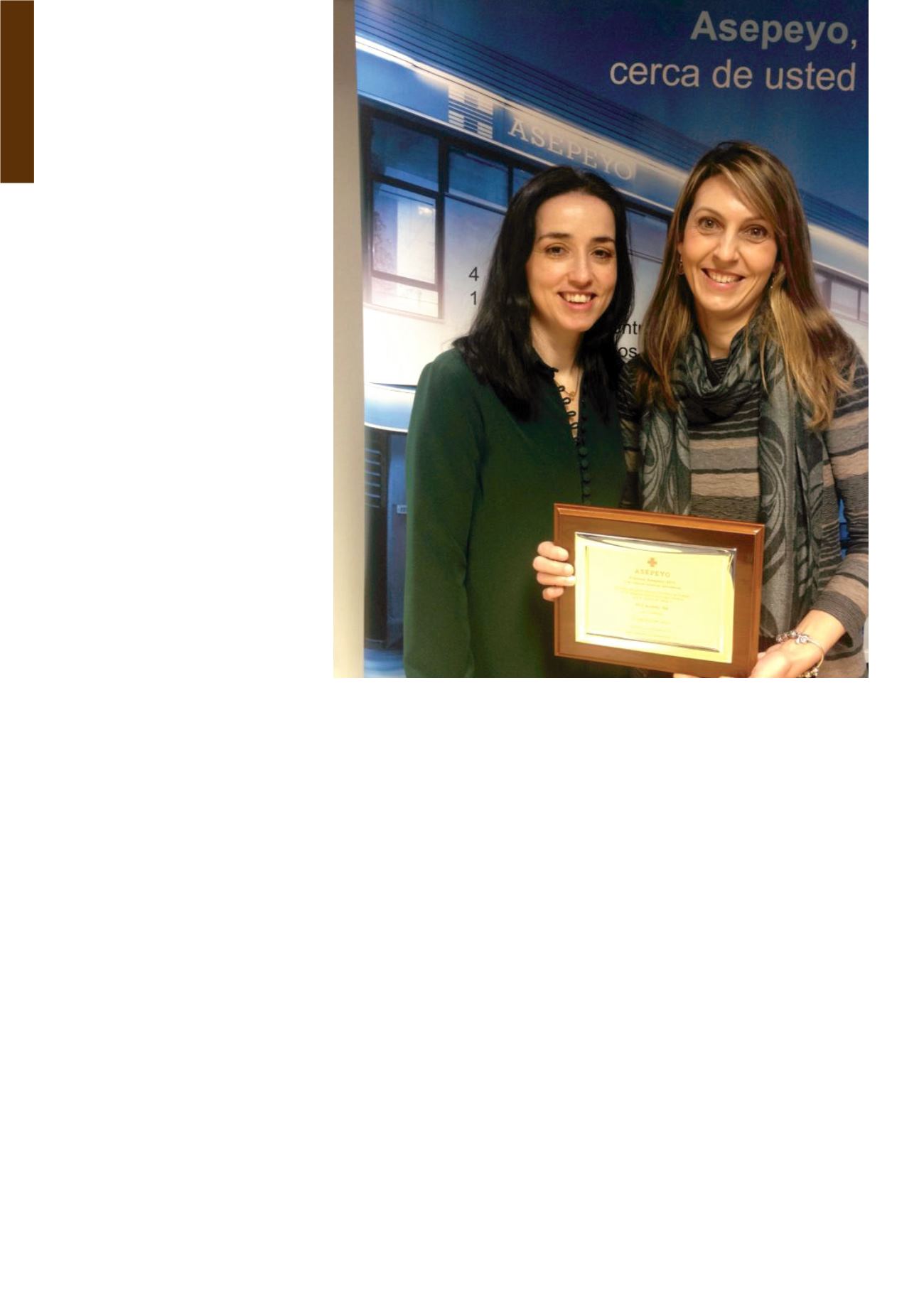

FCC Ámbito received an honorific mention
as a finalist in the “Prize for the best risk
control practices” category of the Asepeyo
Awards 2015 thanks to its proposal “Noise
can be reduced”. These prizes aim to give
recognition to companies associated with
the mutual insurance company that have
stood out because of their projects related
to the prevention of occupational hazards
during 2015.
Lydia Cormano, technical coordinator of
FCC Ámbito, and Marta Agudo, coordinator
of the Occupational Hazard Prevention in
FCC Ámbito’s North branch office, were
responsible for submitting the candidates
for these prizes which included the technical
measures implemented at the Company to
reduce noise in glass recycling facilities.
The project is based on preventive
measures to eliminate noise-related risks
beyond those associated with hearing
impairment (risks including deafness,
professional hearing loss, and physiological
risks, sleeping disorders or insomnia,
communication, mental and psychomotor
activities).
Asepeyo
recognises
FCC Ámbito
efforts due to its
best practices in
risk control
One of the key measures implemented was
the installation of cabins for working that
are perfectly fitted in terms of safety, health,
and welfare. These cabins are sufficiently
large to enable workers to work comfortably.
They have windows to prevent the sense of
isolation, air-conditioners and are fitted with
anti-fatigue rugs.
The cabins were installed in two of FCC
Ámbito’s glass recycling facilities situated in
Sagunto (Valencia) and Cadrete (Zaragoza).
Glass recycling is a complex
process
Quality requisites are very high in order to
obtain a product that meet the specifications
for each intended use and must always be
free of contamination and impurities such
as metals, organic traces, paper, plastic,
stones, ceramic and porcelain.
FCC Ámbito’s facilities feature the most
advanced technology to eliminate these
impurities to ensure that crushed glass,
known as cullet, complies with the quality
requirements demanded by glass bottle
manufacturers.
Most of the sources of noise are found at
the grinding mill and the sorting sieve. A
study was conducted to see if it was
possible to reduce noise by means of
screens, enclosures, or by using acoustic
material to absorb noise. It was finally
decided to change the work spaces by
installing cabins-compartments where they
could perform their work involving the
control and removal of impurities, thereby
reducing the levels of noise exposure by
75%.
Lydia Cormano, technical coordinator of FCC Ámbito, and Marta Agudo, coordinator of the
Occupational Hazard Prevention in FCC Ámbito’s North branch office


















